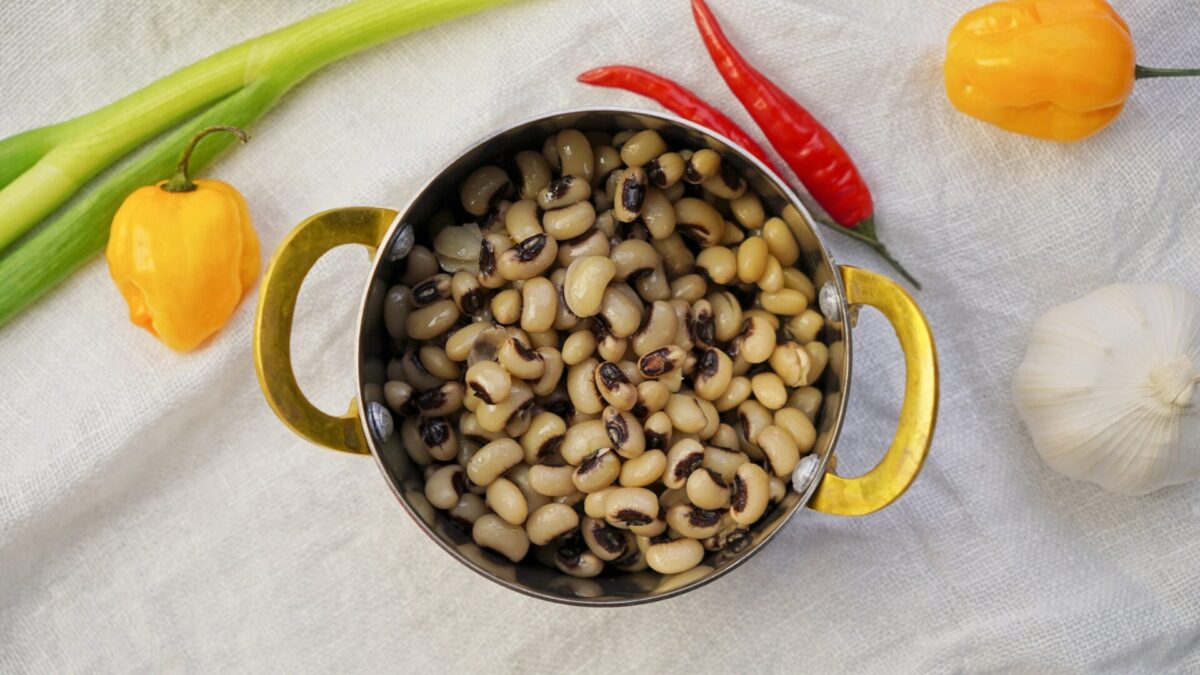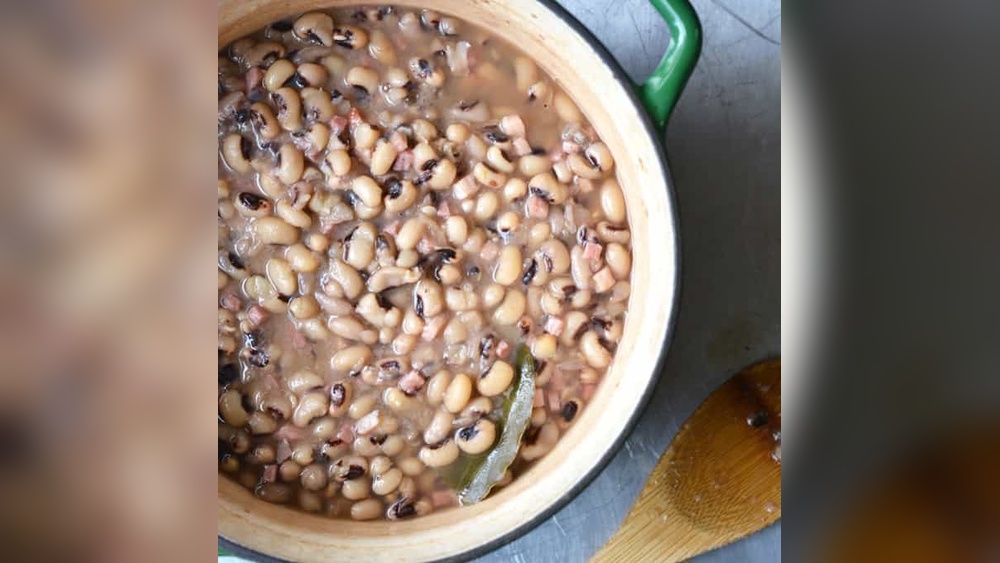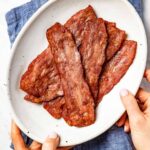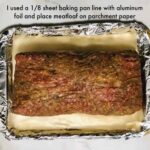Are you ready to enjoy delicious, tender black-eyed peas but don’t have time to soak them overnight? You’re not alone.
Many people think soaking is a must, but what if you could skip that step and still get perfect results? Cooking black-eyed peas without soaking saves you hours and still delivers that creamy, flavorful bite you love. In this guide, you’ll discover simple, effective methods to cook black-eyed peas straight from dry.
Whether you’re short on time or just want a fuss-free way to prepare this classic ingredient, keep reading—you’re about to master a game-changing kitchen hack that will make your meals easier and tastier.
No-soak Cooking Basics
Skipping soaking saves time but changes the cooking process. Black-eyed peas take longer to cook without soaking. Expect about 45 to 60 minutes on the stove. Using a pressure cooker cuts this time to 15 to 20 minutes. Cooking without soaking means peas will be firmer and less creamy. It is important to rinse the peas well before cooking. This removes dirt and small stones.
Soaking softens peas and shortens cooking time by half. Without soaking, peas absorb water slowly. Stir occasionally to prevent sticking. Adding salt during cooking helps peas stay tender. Avoid adding acidic ingredients like tomatoes early; they toughen the peas. Wait until peas are soft to add acids.

Preparing Black-eyed Peas
Start by placing the black-eyed peas in a colander. Rinse them well under cold running water. This helps remove any dust or dirt.
Next, sort the peas on a clean surface. Look for small stones, broken peas, or debris. Remove all unwanted pieces carefully.
Rinsing and sorting are important steps. They ensure the peas cook evenly and taste better.
Clean peas absorb water faster and cook more evenly without soaking.
Stovetop Method
Use 3 cups of water for every 1 cup of black-eyed peas. Bring water to a rolling boil first, then add the peas. Lower the heat to maintain a gentle simmer. This prevents peas from breaking apart and keeps them tender.
Stir occasionally to stop peas from sticking. Keep the pot partially covered to reduce evaporation but allow steam to escape. Simmer for about 45 to 60 minutes, depending on the pea size and freshness.
Check peas for doneness by tasting a few every 10 minutes after 40 minutes. They should be soft but not mushy. If needed, add a little more hot water during cooking to keep peas covered.

Pressure Cooker Approach
Set the pressure cooker to high pressure for 20 to 25 minutes. This timing works well for unsoaked black-eyed peas. Use enough water to cover the peas by about 2 inches.
Natural release means letting the pressure drop on its own. This takes about 10 to 15 minutes and helps peas cook evenly. Quick release lets out pressure fast but may cause peas to split or be less tender.
Natural release is best for creamy texture. Quick release is good if you need peas fast but check for doneness. If peas feel hard, cook a few more minutes under pressure.
Slow Cooker Technique
Use enough water to cover the black-eyed peas by about 2 inches. This helps them cook evenly in the slow cooker without soaking. Too little water can cause peas to stay hard.
Cooking time usually takes 6 to 8 hours on low. This slow process helps peas soften nicely. Check peas after 6 hours. If they are not soft, cook longer.
Stir occasionally if possible to avoid sticking. Avoid opening the lid too often because heat escapes and slows cooking.
Flavor Boosters
Using broth instead of water adds rich flavor to black-eyed peas. Choose chicken, beef, or vegetable broth for a tasty base. Season with garlic, onion powder, paprika, and black pepper to enhance taste.
Vegetables like chopped bell peppers, celery, and carrots bring sweetness and texture. They cook well alongside the peas, making the dish more colorful and healthy.
Adding smoked ham, bacon, or chicken pieces provides a smoky, savory flavor. Meat also adds protein, making the meal more filling.
Digestibility Tips
Spices like garlic, ginger, and cumin can make black-eyed peas easier to digest. They help reduce gas and bloating. Adding bay leaves or turmeric also soothes the stomach.
Salt should be added after the peas start to soften. Adding salt too early can make the peas tough. Wait until the peas are about half cooked before salting. This helps keep them tender and tasty.
Quick Soak Alternative
The boil and rest method is a quick way to cook black-eyed peas without soaking. Start by adding dried peas to boiling water. Let them boil for about 2 minutes. Then, turn off the heat and cover the pot. Let the peas sit for one hour in the hot water. This helps soften the peas faster than cooking them dry.
This method has benefits over no-soak cooking. It reduces cooking time and helps peas cook more evenly. The peas absorb water quickly, making them tender without long soaking. The texture is better than cooking dry peas directly. This way, you save time but still get soft, tasty black-eyed peas.
Common Mistakes To Avoid
Overcooking black-eyed peas makes them mushy and less tasty. Cook just until they are tender but not falling apart. Use a timer to avoid guessing. Check the peas often after 30 minutes. This helps keep a nice texture.
Under seasoning is a common mistake that makes the dish bland. Add enough salt and spices to bring out the flavor. Taste the peas during cooking and adjust seasoning little by little. Herbs like bay leaves or garlic can add good aroma and taste.

Storage And Reheating
After cooking, let black-eyed peas cool down at room temperature. Place them in shallow containers to help cool faster. Once cool, cover and store in the fridge. Keep them refrigerated for up to 4 days to maintain freshness and safety.
Reheat black-eyed peas gently to keep their texture and flavor. Use a microwave or stovetop on low heat. Stir often to heat evenly. Adding a splash of water or broth can prevent drying out. Avoid overheating as it can make peas mushy.
Frequently Asked Questions
Can You Cook Dry Black-eyed Peas Without Soaking?
Yes, you can cook dry black-eyed peas without soaking. Just rinse them well and increase cooking time by 30-45 minutes. Cooking unsoaked peas takes longer but yields tender results.
How To Cook Black-eyed Peas From Dry?
Rinse dry black-eyed peas to remove debris. Boil them in fresh water for 45-60 minutes until tender. Drain and season as desired.
Is It Okay To Cook Black Beans Without Soaking?
Yes, you can cook black beans without soaking. It takes longer but still cooks thoroughly. Soaking reduces cooking time and improves digestibility.
Do I Need To Soak My Black-eyed Peas Before I Cook Them?
Soaking black-eyed peas is optional. Soaking reduces cooking time and improves digestibility. Without soaking, cook peas longer until tender.
Conclusion
Cooking black-eyed peas without soaking saves time and effort. Simply rinse the peas well and cook them slowly until tender. Using enough water and a gentle simmer helps soften the peas evenly. Adding flavors during cooking boosts taste without extra steps.
This method works well for quick meals and last-minute plans. Enjoy soft, delicious black-eyed peas without the wait. Try this easy way to cook and savor your dish today!

Yes, working as , Food Blogger and Product Reviewer for last 6 years. Here you will get amazing deals for Smart kitchen products. I am your best source for the latest update in cooking trends. I provide insightful articles, reviews, and analysis on cutting-edge kitchen gadget. My mission is to empower readers with the knowledge they need to stay ahead in a rapidly evolving coking world. Join me as we explore the future of food technology and how it shapes our lives today and tomorrow.





